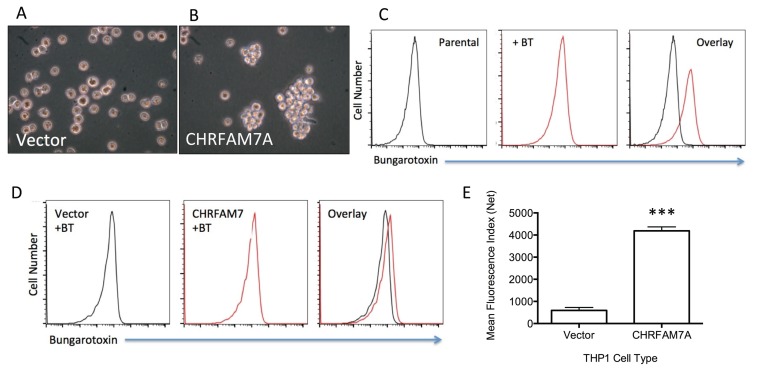Figure 5.
Biological consequences of CHRFAM7A expression. THP1 cells appear as characteristic mononuclear cells growing in suspension (A) but with stable CHRFAM7A overexpression (B) the THP1 cells display an increased cell-cell adhesion phenotype demonstrating that CHRFAM7A is biologically active and alters THP1 cells. As shown in (C), parental THP1 cells bind the selective α7nAChR agonist bungarotoxin (BT) which can be measured by flow cytometry of THP1 cells incubated with labeled BT. Similar flow cytometry after stable transduction of THP1 cells with CHRFAM7A showed increased BT binding (D) when compared with THP1 cells transfected with only GFP. The difference in specific bungarotoxin binding can be quantified by measuring the increase in mean fluorescence (E). (***p < 0.001, N = 4)

